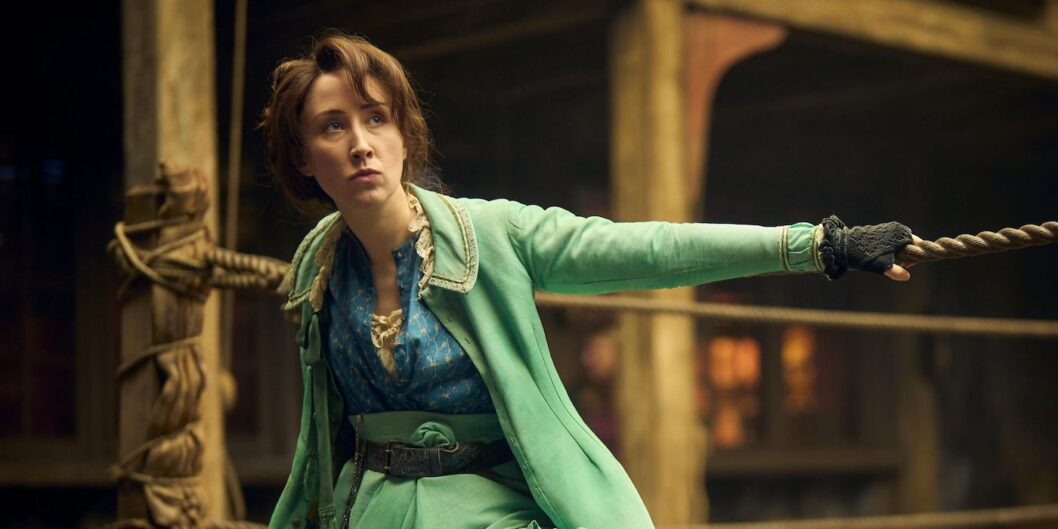Hulu’s ‘A Thousand Blows’ Sets the Stage for a Riveting Victorian Tale
Hulu is set to launch its newest period drama, A Thousand Blows, on February 21, 2025. Developed by Steven Knight, well-known for his acclaimed series Peaky Blinders, this show delves into the gritty underground of late 19th-century London. The narrative focuses on the intertwined lives of three main characters: Hezekiah Moscow (played by Malachi Kirby), Henry “Sugar” Goodson (portrayed by Stephen Graham), and Mary Carr (played by Erin Doherty), as they navigate their violent pursuits for power and revenge.
A Spotlight on Diversity in a Victorian Era
A Thousand Blows stands out in the period drama genre by showcasing a diverse cast representing the multicultural fabric of Victorian London. The series introduces Hezekiah, a Jamaican immigrant, as he and his companion Alec (played by Francis Lovehall) align with Sugar, a bare-knuckle boxer, and Mary, the formidable leader of the Forty Elephants, London’s notorious all-female gang. This diverse assembly presents a broader perspective on the societal dynamics of the time, contrasting with many other productions that tend to offer a more homogenized view of the era.
The setting is rife with characters who reflect various struggles, loyalties, and conflicts, adding depth to the storyline. These include Mr. Lao, the innkeeper, and Sugar’s brother Treacle, who each bring their narratives to the forefront. Despite numerous side characters, the central trio nonetheless struggles with a sense of focus, particularly as the plot aims to balance their respective journeys without fully fleshing out their stories.
Comparisons to ‘Peaky Blinders’
Given Knight’s involvement, it is no surprise that A Thousand Blows has drawn early comparisons to Peaky Blinders. Similar themes of crime, ambition, and violence permeate both series. However, critiques have emerged regarding differences in execution and depth. While Peaky Blinders managed to steer its focus away from London, enhancing its gritty narrative with broader socio-political undertones, A Thousand Blows both benefits and suffers from Knight’s established style.
The lead character Mary Carr shares certain traits with Tommy Shelby, the protagonist of Peaky Blinders, albeit without the same level of nuance or complexity, according to early viewers. Critics argue that the show attempts to find its identity within the familiar territory of crime dramas but often feels like a rehash of its predecessor.
Narrative Focus and Execution Concerns
A notable critique of A Thousand Blows is its struggle to maintain narrative clarity. With a split focus between the three leads, the series risks losing the emotional weight of its storylines. This dispersion of attention prevents viewers from fully engaging with any character’s arc, particularly Mary’s, despite her being prominently featured in promotional material.
Additionally, the show has left audiences with mixed feelings regarding its structure. Knight’s storytelling is said to leave viewers with a cliffhanger, indicating that the show is only presenting the first half of a larger narrative. This decision to split the season into two parts raises questions about pacing and resolution, leaving viewers yearning for continuity and closure.
Concluding Thoughts and Anticipation
Despite its drawbacks, A Thousand Blows offers a fresh take on Victorian-era storytelling, blending engaging performances with a diverse cast amidst the backdrop of London’s underground. The show’s premiere on Hulu has generated intrigue, particularly for fans of Knight’s previous works.
Ultimately, the effectiveness of A Thousand Blows will depend largely on its ability to resolve the narrative threads introduced in its initial run. With the second season already filmed, fans anticipate a concluding arc that could enhance or rectify the show’s current shortcomings. As the drama unfolds, viewers can expect to see how Knight and his team evolve their storytelling approach in future episodes.
Audiences will be able to watch A Thousand Blows exclusively on Hulu, showcasing what promises to be a noteworthy addition to the landscape of period dramas.









